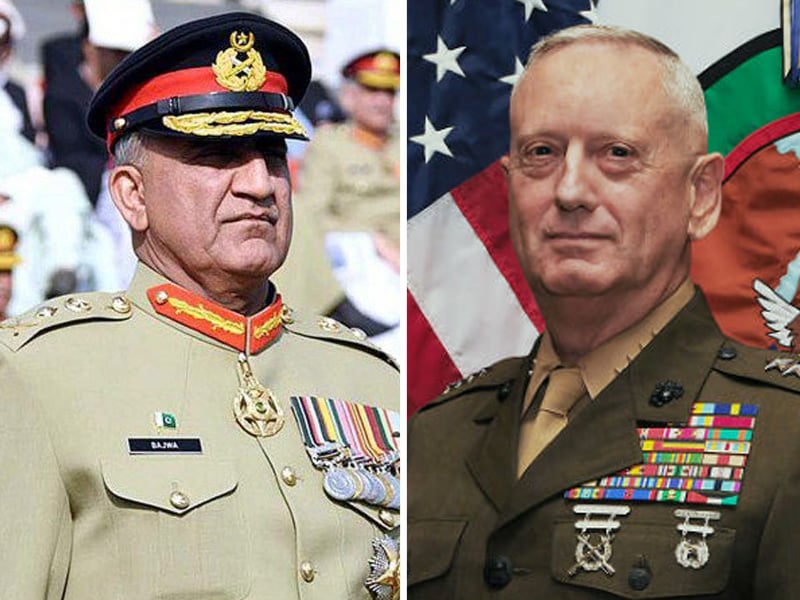
Gen Mattis is already putting Pakistani leadership in a tight spot even before he has arrived by giving his pre-visit statements like “the US would try one more time to work with Pakistan in Afghanistan before President Donald Trump would turn to options to address Islamabad’s alleged support for militant groups.” When asked by a reporter that Pakistan could undertake temporary changes only to go back on its old ways, the US defence Secretary replied, “We don’t want transient and temporary changes and Islamabad must understand that while there are significant advantages to changing, the penalties for not changing are just as significant.” This isn’t the language of encouragement and support by the US to an ally that is tied in partnership to fight the War on Terror instead it’s a threatening language that disregards the tremendous sacrifices Pakistan has given. Where to from here would the Pakistan-US strategic relationship now go? To me, both countries have already approached a ‘strategic pivot’ in their relationship, the precise timing of end of which may be uncertain but surely the upcoming high-profile visits will prove a catalyst.
Pakistan will continue to disagree with President Trump’s assessment that Pakistan is a safe haven to “agents of chaos, violence and terror.” More importantly, it seems the civilian and military leadership in Pakistan has finally decided to fight the WoT not ‘by changing its behaviour’ but how to fight it under the (possible) US imposed economic depravity and diplomatic isolation, if in case the US decides not only to step back from the US-Pakistani partnership but also impose certain sanctions on Pakistan. While the strategic ending of the partnership has been on the cards for a long time now the real question is will the US benefit from the discontinuity of this partnership?
What the US needs to remember is that it is not only Afghanistan’s insecurity but its broader conflict with the ‘jihadists’ terrorism’ in which it needs the support of countries like Pakistan. It should not look at its relationship with Pakistan from a narrow policy goal of apportioning blame on Pakistan for its own huge security failure. More broadly, it should focus on helping to eliminate the causes that breed extremism and radicalisation in countries like Pakistan. As long as the causes of jihadist ideology persist, so too will the threat to the regional as well as global security.
Didn’t the US try the ‘heavy foot print strategy’ in Afghanistan and maintained over 100,000 troops at the height of its surge (Obama’s way of war in 2011-2014)? At that time why was strict border management on the Afghan side of the border not tried? The simple answer is that the nature of terrain and the hundreds of posts that stretch and expand over 2,430kms of border present easy and vulnerable targets to the Taliban, and a reliance on such a security method and strategy would have meant risk of higher causalities. It is interesting to read Rod Nordland’s report in The New York Times titled ‘US Expands Kabul Security Zone, Digging In for Next Decade’. This report suggests that even now the US emphasis is not on implementing tighter and stricter control on Pakistan-Afghan border management but on expansion and security of the Green Zone around Kabul, which houses Western embassies, government ministries and the Nato and US military headquarters. Norland’s report emphasises that “even after 16 years of US presence in Kabul the expansion of the Green Zone in Kabul is a reminder that even the capital city’s central districts have become too difficult to defend from Taliban’s bombings.”
Reports also suggest that all the six Afghan Military Corps are now engaged in offensive operations in Afghanistan. That is good news but as long as Pak-Afghan border is not manned by ANSF’s defensive corps both Afghanistan and Pakistan will keep accusing each other of not preventing the cross-border movement of the militants. Having spent $800 billion in this 17-year-old war that has cost it over 2,000 causalities and over 20,000 wounded, is the US still justified to keep fortifying Kabul and do nothing at the Pak-Afghan border that it considers the only place from where trouble emanates?
The US and Nato force presence in Afghanistan suggests that the US is not planning to fight the Taliban on the battlefield. This ‘light foot print’ approach necessarily features reliance on drone and other long-range strikes on the militants with occasional Special Forces operations against the militant hideouts that would continue to have a large ANSF’s component. Is this an international force that seems to be gearing up by digging in the Green Zone to win a war in Afghanistan?
To sum up, those responsible to charting America’s strategic course in the years ahead in the Afghan war must not lose sight of two important factors. One, the road to success in Afghan war runs through Pakistan and for that both the US and Pakistan need to partner rather than take opposite views on how to fight this war. Two, without border management and control on the Afghan side of the border infiltrators will continue to sneak into Afghanistan from Pakistan’s side and vice versa — for that Pakistan cannot be unilaterally blamed — doing more at the US and Afghan end is equally crucial to win this war.
Published in The Express Tribune, November 30th, 2017.
Like Opinion & Editorial on Facebook, follow @ETOpEd on Twitter to receive all updates on all our daily pieces.



































1713853507-0/MalalaHilary-(2)1713853507-0-270x192.webp)








COMMENTS (8)
Comments are moderated and generally will be posted if they are on-topic and not abusive.
For more information, please see our Comments FAQ